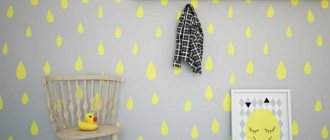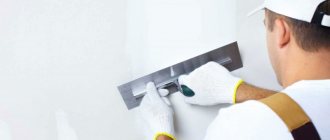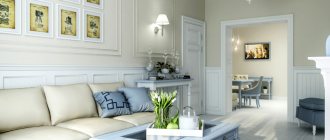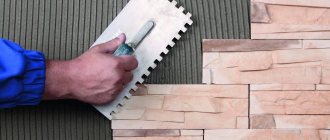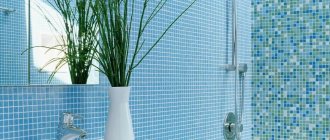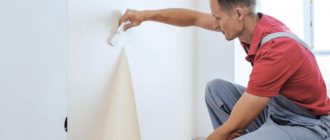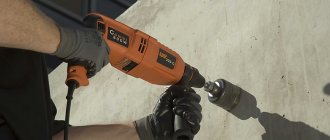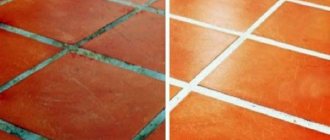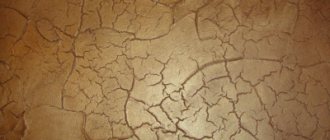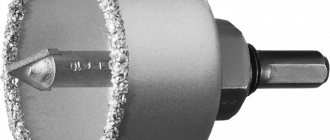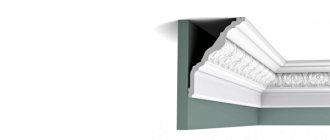If you need to beautifully decorate various decorative details in the interior, there is a win-win option - molding. Under this term there is a raised bar (flat or with various profiles, relief patterns), which is used as a decorative element. You can glue moldings onto walls, suspended ceilings, arched openings, mirrors, trims, and doors. There are also furniture options.
Why glue decorative plinths?
Beautiful moldings also perform purely practical functions:
- they can be used to zone space;
- gluing moldings on top of wallpaper allows you to hide or disguise existing defects;
- strengthening and sealing joints between various materials covering the surface;
- creating frames;
- emphasis on the desired interior detail or, conversely, diverting attention from unsuccessful elements that cannot be removed.
You can also attach molding to mechanically protect the surface.
Benefits of coverage
Wall decor with moldings as part of the overall interior of the room performs not only the function of decoration, but also has such a characteristic as practicality.
Facing products look equally good on various surfaces and fit into almost any finishing style.
This material allows you to create a beautiful pattern cheaper than using gypsum stucco. Additionally, a lot of effort and time are saved. If done correctly, it is almost impossible to distinguish molding parts from natural plaster parts by appearance.
Imitation of natural stucco
The coating also helps to hide the imperfections of the surface being processed and helps to make smooth transitions between raw materials of different textures and contrasting colors. It is possible to achieve better results if all the parts are painted (the material holds the shade perfectly, and the paint applies easily).
Hiding defects
A wide range of products helps you purchase the option that fits your construction budget.
Product range
Easy to use and low maintenance, molding products are quickly winning the hearts of many property owners.
How to glue moldings to a wall or ceiling: general rules
Each specific case has its own specifics. If you need to glue moldings to a wall with wallpaper, the task will be different from gluing it to a primer.
General recommendations are as follows:
- Surface preparation: cleaning from dirt, degreasing, and leveling if necessary.
- Primer (necessary to improve adhesion and reduce glue consumption), if necessary, paint.
- Marking: you should draw lines along which the planks should go. To do this, it is convenient to use a level and plumb line.
- Before gluing, all planks and other materials must be kept in the room for sufficient time so that they reach room temperature. This usually takes about a day.
- Cutting corners at 45° for a strong connection. For this purpose, it is better to use a special tool – a miter box.
The back side of the planks is covered with glue, then pressed tightly to the desired location. You need to press along the entire length. Therefore, if the planks are long, it is better to work with an assistant.
You need to press until the glue sets. Then the element is released and the adhesive is allowed to dry completely.
The joints are treated with joint glue, which is applied generously. After pressing, excess glue comes out - they are quickly wiped off with a rag.
Complete drying is achieved in about two days. After this, the elements can be painted and gilded.
Step-by-step instructions
Installation of decorative strips does not cause difficulties even for people with no experience. You don’t have to look long for something to use to glue moldings to the wall either. One of the best solutions is Ultima 302 adhesive for panels and moldings 360 grams.
How to properly glue moldings to the wall
Many people doubt whether it is possible to glue moldings to wallpaper. This option for wall mounting of overhead strips is quite acceptable. True, the service life will be somewhat shorter. In addition, if you need to change the wallpaper, you will have to remove the molding along with it. But if such a situation seems acceptable, then nothing prevents the installation.
The sequence of actions on how to glue molding to wallpaper is quite simple. But you need to act very carefully. If you use too much glue, drops of it can ruin the appearance of the walls.
Before you start gluing, if possible, you should try to clear the wall of wallpaper in the place where the plank will go. This will increase the reliability of the fastening. If such preparation seems too labor-intensive or completely impossible, in this case it is better to glue the molding with mounting adhesive with maximum adhesion.
The order of stickers is standard:
- Keep all materials overnight at room temperature.
- Mark the mounting points.
- First glue the corner elements.
- Attach straight sections to the corner parts.
If the plank is too massive, you will have to additionally secure it with self-tapping screws. After the glue has completely dried, the screws can be removed, and the places where they were can be carefully covered with putty.
To achieve a harmonious color composition, the trim strip may need to be painted. It is recommended to do this no earlier than 24 hours after all the planks have been attached.
Ceiling decoration
It is recommended to select decorative strips for ceilings depending on other materials with which the surface is finished:
- polyvinyl chloride - for suspended ceilings;
- foam plastic - for suspended plasterboard and false ceilings;
- wooden - for wood cladding;
- polyurethane – universal, suitable for any materials;
- gypsum - versatile, beautiful, but very difficult to install.
Before gluing the PVC plastic ceiling molding, the surface is thoroughly cleaned. The corner elements are installed first. If the linings are very heavy, then they are additionally attached with self-tapping screws. In order to properly glue in the corners and all the elements fit together, the edges need to be trimmed with a miter box at 45°.
How to beautifully glue molding to furniture
Decorative strips can update old furniture and add a personal touch to new ones. They are attached with glue. Polyurethane is best as it leaves almost no marks.
Self-adhesive options are very convenient - they do not require additional compounds or fastening materials. To install, simply remove the protective film and firmly press the element to the surface.
If the decor is massive, it has to be further strengthened with the help of special furniture nails.
The sequence of steps when decorating old cabinet furniture with molding is as follows:
- Remove all doors and fittings.
- Remove all old paint. This can be done using an emery wheel or using a hairdryer to heat the top layer and scrape it off.
- Level the surface, putty, sand. Can be impregnated with drying oil or a protective compound.
- Apply markings. Cut the molding into pieces of the required length. Glue starting from the corner elements.
- If desired, cover the top of the overhead elements with gold leaf.
To paint the planks, alcohol-based varnishes and water-dispersed paints are used.
Interior decor with molding: tips
First, let's figure out why a wall with moldings is so attractive. As soon as moldings find their application in the interior, the room immediately becomes much more refined.
Products can act as a separate decorative element or complement the main style. In particular, they are used as dividers for wallpaper of different colors.
When decorating surfaces, wall molding allows you to combine together seemingly incompatible decorative elements. For example, they can be used to decorate completely different types of wallpaper, wallpaper and paint, as well as other types of ceiling and wall decoration.
The overlays will look appropriate in almost any room. They are used in the bathroom, kitchen, bedrooms, etc. Also, with the help of these products, a certain area of the wallpaper is isolated, making an original frame around it. A rather original solution is the design of the window, thereby creating a stylish frame around the perimeter of the window frame.
You should choose wall molding in accordance with the overall style and size of the room. For example, for small rooms it is better to take thin planks, which will eliminate the effect of cramping the already precious square meters. If you manage to choose the right decoration, you can benefit from the area of the room, making it visually larger or, conversely, less empty.
Why are decorative plinths glued?
These products are used mainly for design reasons. However, overlays also have several other important effects.
They should also be taken into account:
As you can see, there are really many benefits from gluing decorative strips. Now let's focus on when wall moldings are not recommended.
Where should you not glue wall molding?
So, on the Internet there is often a question about whether it is possible to glue moldings on top of wallpaper. And not unreasonably, because in fact this often leads to sad consequences. Therefore, it is strongly not recommended to glue molding to wallpaper, because they will refuse to give you a guarantee that it will last for a long service life.
As you can see, wall molding should not be positioned as a universal material that can be glued to almost any surface. In addition, you need to be extremely careful with the adhesive material itself. After all, if adhesive residue gets on the wallpaper, it is difficult, and sometimes completely impossible, to remove it without leaving a trace.
In addition, there is a problem in painting the product. Most often, the overlays have to be painted to match the wallpaper, and if even a drop of paint gets on the canvas, the repair can be completely ruined.
Non-standard use of interior profiles
Interior wall molding is often used for purposes that are unusual for many. In particular, the products are used to decorate structural elements of furniture. Occasionally, decorative skirting boards can be used as decoration for various pieces of furniture.
Not so long ago, decorative overlays were used to decorate windows. Such profiles look great as window frames.
In addition, the planks are also used as frames for wall paintings. For example, if you don’t like wall paintings and prefer to paint directly on the wall. In this case, framing it with molding will be a truly unique solution, unlike classic design options.
How to choose glue based on the material of the molding and base
The correct solution to the problem of what to glue the decorative molding on ensures the durability of the installation. Therefore, before you start decorating the interior with molding, you need to carefully select the adhesive composition. This choice is determined by the material from which the overlay strips are made:
- For PVC panels and light plastic flexible moldings, PVA or wallpaper glue is suitable; you can also use powerful products for decorative elements. Glue for polyurethane skirting boards is also suitable.
- Polystyrene baguettes require solvent-free products. Acetone is especially dangerous for them. It completely corrodes the foam parts.
- Planks and heavy figured gypsum stucco molding are attached to polyurethane compounds or gypsum solutions.
- Products made from duropolymer require powerful mounting and joining adhesives. You need to select carefully, since different compositions are recommended for different impact-resistant composites.
- Massive wooden decorative overlays, as a rule, are so heavy that they have to be additionally secured with self-tapping screws.
The main rule for choosing glue: carefully read the instructions that come with each package.
Painting
The choice of paint depends on the material of the decorative elements. It should be without acetone. Before painting over mounting adhesive on wood, foam or plastic, be sure to remove any remaining residue with a knife or sandpaper and cover it with putty.
It is better to paint the joints before gluing them to the wall.
By painting a wide molding, you can give free rein to your imagination and highlight the ornaments with different colors.
As you can see, it is not so difficult to transform the appearance of a room and give it a solemn or discreet atmosphere with the help of moldings. And it doesn’t matter what you choose: decorating the walls with moldings made of polyurethane, plastic or gypsum, the main thing is to adhere to measures in the quantity and compatibility of relief elements.
Source
What to do after gluing
The pads do not require complex care. The composition is fanned from time to time with a soft feather broom and wiped with a slightly damp cloth. It is important to ensure that dust does not eat into the decorative relief elements. If you allow a large accumulation of dust, the molding may darken, and then it will have to be repainted.
Cleaning can also be done with a vacuum cleaner with a very soft brush. On difficult terrain, remove dust with a soft brush or cotton swabs.
It is better not to use cleaning agents, as they are too aggressive on painted surfaces.
The wood can be wiped with plain water, and if it is heavily soiled, washed with liquid soap.
A touch of classics
Often molding elements are used to create a more classic interior, to give it aesthetics, softness, and lightness. This means that if the room is made in a classical or neoclassical style, then the molding will best complement the design solution.
Classic design
One of the classic solutions is horizontal fastening when combining different types of raw materials on one surface. For example, it perfectly decorates the places where the first and second half of the wall covering are combined. In this case, the standard is a lighter top, darker bottom.
Inserts made from decorative wallpaper do not limit the owner in the choice of material for forming the insert structure.
Neoclassical
This also includes framing niches and emphasizing protrusions.
On the other hand, the products have no serious limitations, and they will fit harmoniously into any other option for facing the living room or hallway.
How to wallpaper a wall with molding in the middle
Frame moldings look very noble. With this method of finishing, doubt arises: wallpaper or moldings are glued first. Experts recommend gluing the wallpaper first and placing frames on top of it.
If it is not possible to remove the moldings, then the wallpaper will have to be cut. When working with wallpaper, adjust the joints as carefully as possible. The easiest way to do this is with monochromatic options. The most labor-intensive adjustment process is when gluing photo wallpaper.
Embossed non-woven or patterned ones require more trouble. For adjustment you need to have 2-3 meters of reserve.
Optical tricks
Moldings improve the optical proportions of space, which is why they often appear among the latest interior design trends. This finish is not only fashionable, it will solve some problems.
- If the ceilings are too low, wide profiled strips that hide the line between the walls and the ceiling, made in the same color as the ceiling, in combination with vertical striped wallpaper, create the impression that the interior is higher than in reality. By lifting the baseboard from the ceiling and lighting it, we visually make the ceiling higher.
- If you want to get the opposite effect, you should place the ceiling plinth lower, separating the white ceiling from the wall of a different color.
- A flat wall looks boring. Introducing frames and dividing the wall into fragments will create texture and the effect of depth.
- Horizontal lines make a high room smaller, while vertical lines raise the ceiling.
- Rectangular wall sections filled with wallpaper, even painted a different shade than the other walls, create illusions.
- Lines of moldings divide the room optically and serve as a way to hide the edges of the wallpaper at the junction of the walls of doors or windows.
- Skillfully placed decors will optically reduce the curvature of the walls.
